The Toyohama tunnel collapse accident that occurred in Hokkaido in February 1996, and in August of the following year, while memories of the first collapse were still fresh in people’s minds, another large-scale collapse occurred in the Shiraito tunnel No. 2 on the same national highway No. 229. The recovery work to clear away the 20,000m3 of rock and soil and build a new tunnel was done using a 3-shift, 24-hour system. However, it took 1 year and 7 months to reopen, meaning that the locals suffered inconvenience for a long period of time, and the local economy suffered great damage. If using Implant Structure, the GRB SystemTM, which does not require temporary work, would be used to build an Implant Wall as well as making a bypass road to minimize the period of disruption to this lifeline.
"Implant™ Bell Cap Bridge" to rapidly build a strong bridge with temporary work-free construction
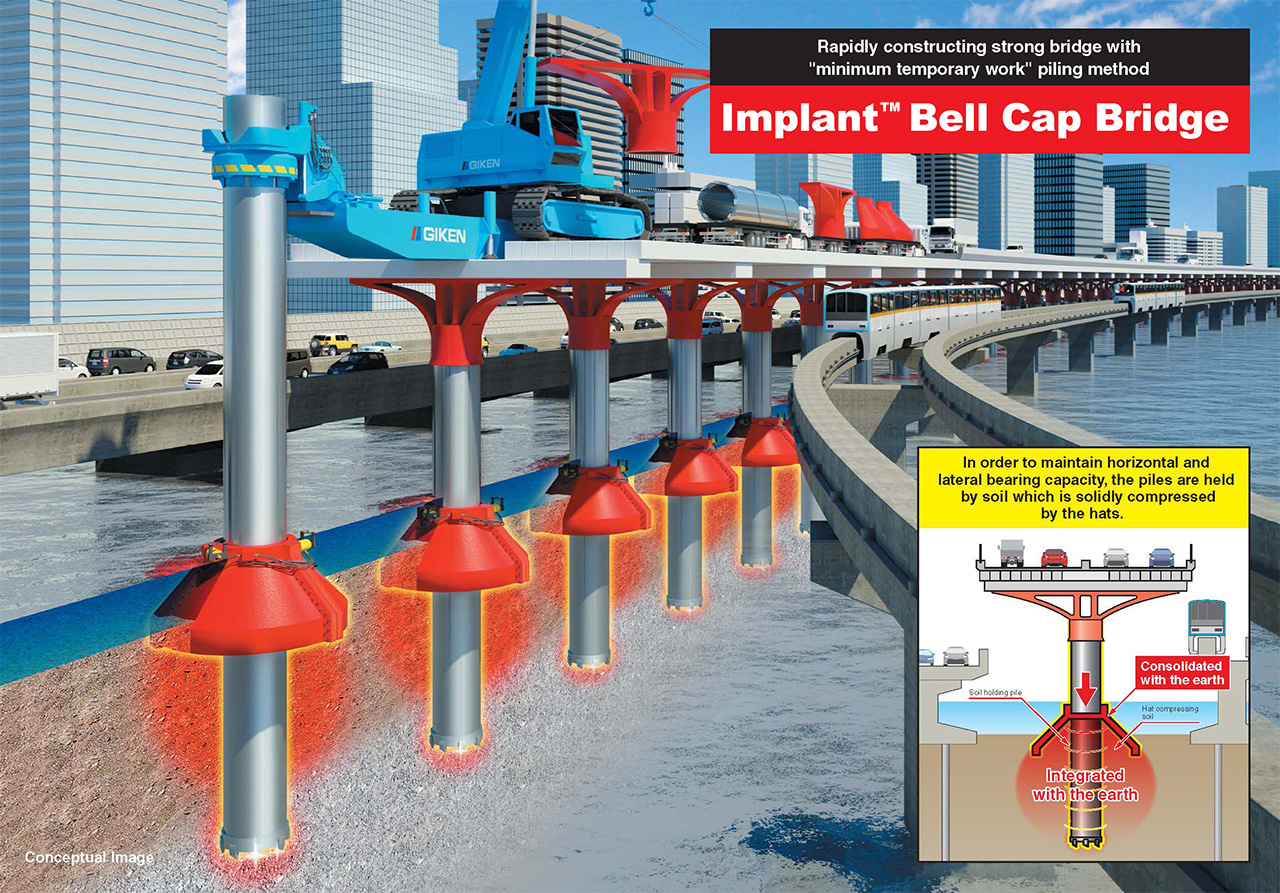
"Implant™ Wall" as a measure for rock collapse
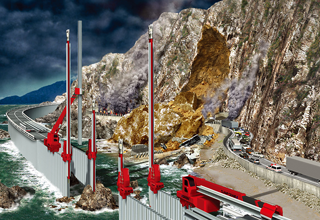
Measures for washed away railway tracks
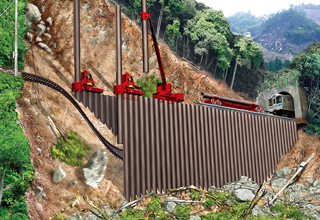
There are more than 270,000 (according to survey taken in 2000) landslide hazard locations throughout the country, with many locations not having had disaster prevention measures applied. Particularly in mountainous areas, railway tracks can get washed away due to flash floods and landslides resulting from heavy rain, and it is not uncommon for tracks to be left suspended in mid-air. When this occurs, recovery can take many days, causing great inconvenience for those in areas where their main access has been cut off, and economic losses are unavoidable. In such cases, the GRB system™ can be used to press-in tubular piles without needing temporary work, to build Implant Wall. In addition to recovering the railway tracks in a short period of time to allow trains to resume services, it provides powerful earth retention and water blocking capability to prevent landslides and avoid secondary disasters.
Widening of narrow roads
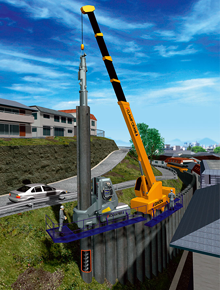
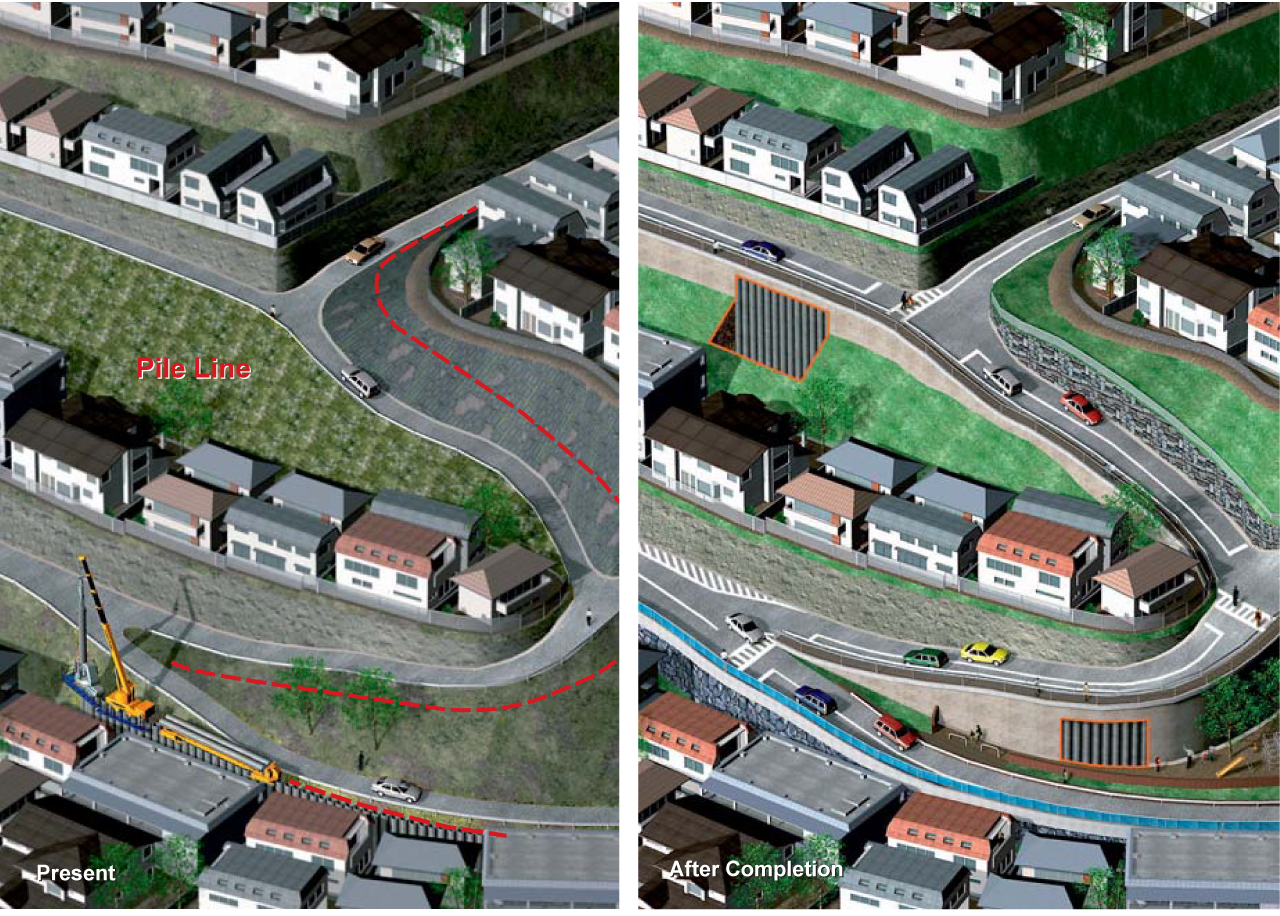
The narrow roads that you often see in old towns and in suburban areas are not only congested all the time, but are also a large stumbling block for evacuation and recovery following a disaster. However, due to housing or embankments close to both sides of the road, it is often difficult to resolve the problem using conventional construction methods. Using the space-saving GRB System, it is possible to build a new retaining wall, that is, a strong Implant Wall between the road and houses, making it possible to widen the road. For the material of the retaining wall, hybrid material centered on concrete and steel is used. For stainless steel and steel, materials coated with titanium, urethane, epoxy resin, ceramic, stone and wood have been developed and are to be produced at the plant. For embankment materials, in principle we do not use soil but instead use polyurethane bottles, urethane waste and other plastic waste materials.
Utilisation of dead space
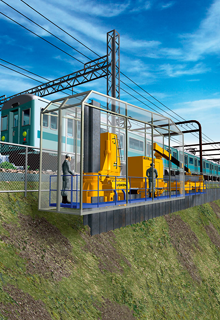
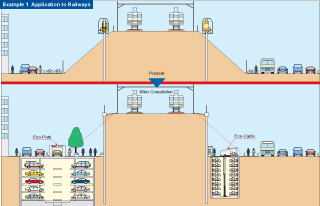
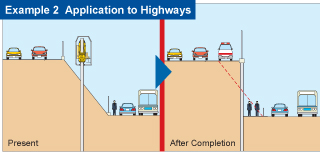
Causeway structures are often adopted for expressways and railroads, but the slope of the causeway is a structurally dead space. In particular, transportation systems as part of our urban lifestyles have drastically changed, and therefore the effective use of limited space can be said to be a national mission. A robust self-retaining wall based on the Implant Structure cuts a frontal causeway and enables the creation of new space, while simultaneously providing seismic strengthening of the causeway.
Revival and reinforcement measures for bridges
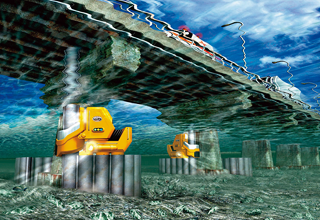
Bridges are key life lines for both the economy and culture. The loss of a bridge’s functions as a result of aging, scouring, or earthquake will greatly hamper social life. An existing bridge pier can be ringed by a robust Implant Structure wall to combine them, thereby enabling the renewal of its functions or for providing seismic strengthening. Underwater piling allows us to construct Implant Structure wall both efficiently and rapidly without being hampered by the clearance under the girder or the ebb and flow of the tide.
Building main roads in mountainous areas
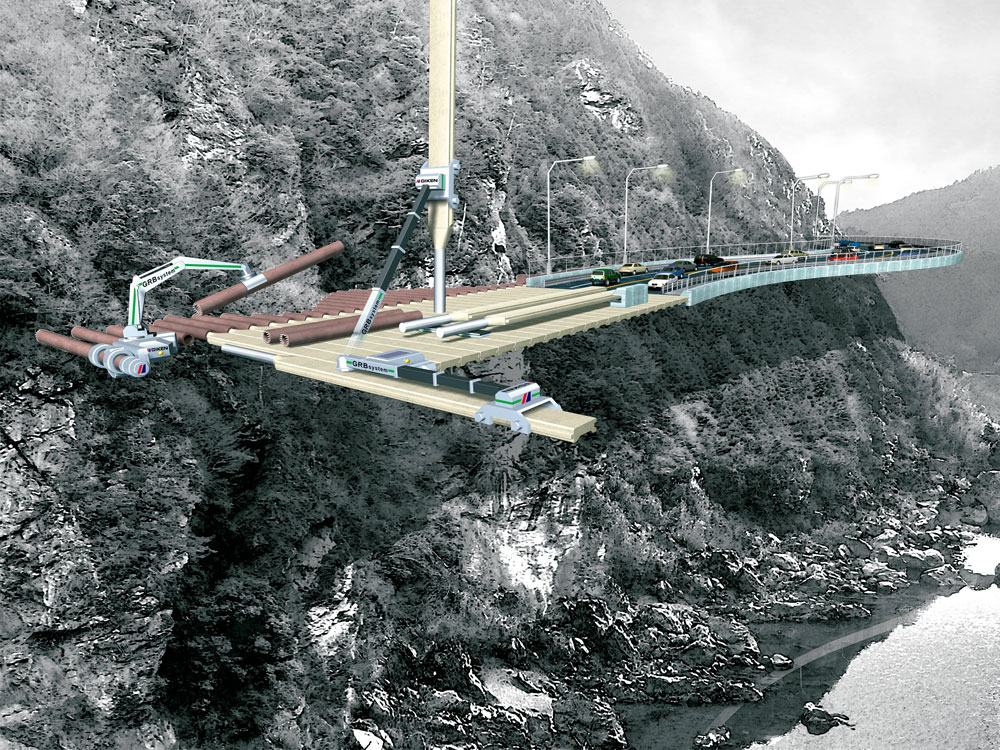
A key to the coexistence between the environment and civilisation lies in how to minimise the footprint of structures on the ground. Conventionally, when an arterial highway is constructed in a mountainous area, bedrock with a high compressive strength is excavated to enable to the creation of a concrete footing structure. This method not only spends huge amounts of cost and time, but also destroys the nature and the landscape of the site. However, a “Lateral Implant Road” that is constructed by laterally pressing-in allowable structural members into the bedrock can minimise the footprint to the sectional area of the pile, by leveraging the strength of the ground into which it is driven. This is a simple structure in which the structural member is directly used as the roadway, reducing the time required for construction as well as the cost. If the road is subsequently not required, it can be removed and the natural environment can also be restored.
Building bridges
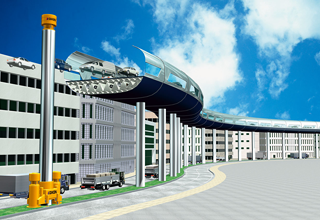
Maintenance of the transportation networks is essential for the country's development. Above all, what is needed for railroads and roads are bridges. The original purpose of a bridge comes from the concept of allowing passage for cars and trains, with the Implant Pier Construction Method being the inverse of the completed structure. For the bridge pier, a structure that can withstand the required horizontal and vertical loads is produced at the plant, and is directly pressed in at the site to support the earth. For example, if a strength of 10 is required for the pier, structural members with a strength of 10 will be produced at the plant. If a strength of 10 is excessive, it will be divided in two, and two structural members with a strength of 5 will be pressed in. When you hear anecdotes of a castle built in one night, it is hard to hide the shock at that idea and achievement, however, with this construction method, the bridge built in one night is more than possible.


